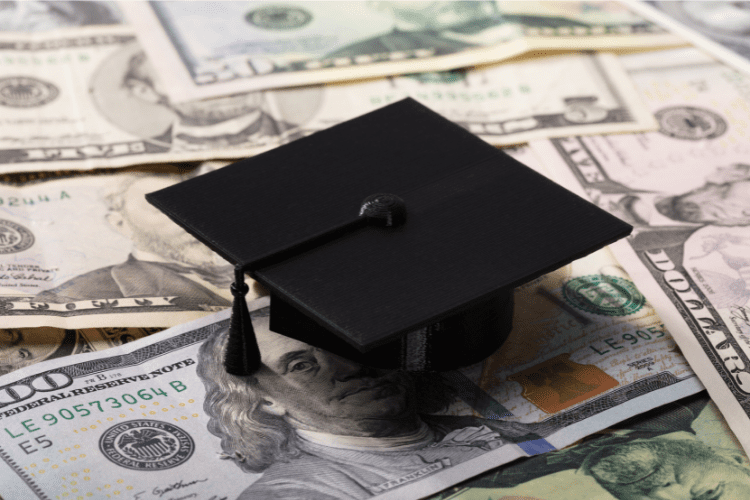How Do Student Loans Work?

For more than 40 million Americans, student loans are the key to higher education. The average cost of tuition tends to increase about 8% per year, doubling the cost of college every nine years! So, while necessary for many, it’s important to understand how student loans work before committing to their terms.
What Are Student Loans?
A student loan is money borrowed from the government or a private lender to cover the costs of college. The loan collects interest and must be paid back later, usually after graduation.
You can apply for student loans by filling out the Free Application for Federal Student Aid (FAFSA).
Gather federal tax information, bank statements, pay stubs, and other important financial information to complete the FAFSA form. If you’re a dependent, use your parents’ information. If you’re an independent student, use your own.
FAFSA sends your application to your schools of choice, determining how much financial aid you qualify for. You’ll receive an “award letter” with all of the details. Aid is available through FAFSA in the form of loans, scholarships, and grants.
You can also apply for private student loans through a bank. However, these tend to be more expensive and assign higher interest rates than federal loans. Private loans also lack the flexibility of federal loans; you must make monthly payments while still enrolled in school.
The COVID Update
In March 2020, all federal student loan payments were paused and automatically placed in forbearance due to the COVID-19 emergency. The payment pause was originally supposed to last six months, but it became one of the longest-lasting pandemic relief measures, with the 0% interest rate ending on September 1, 2023, and payments restarting in October.
Recently, the U.S. Department of Education under the Biden administration announced the revamp of the Public Service Forgiveness Loan, which will mean student loan forgiveness for upwards of 70,000 more borrowers. At this point, it is unknown if there will be broader loan forgiveness.
Types of Federal Student Loans
The majority of college students choose federal loans because they offer certain perks not available from private loans. There are two main types of federal loans to understand: direct subsidized and unsubsidized loans. They are sometimes referred to as Stafford Loans.
With a direct subsidized loan, the government covers the interest payments on your loan while you’re still enrolled in school. This type of loan is only available to undergraduate students who demonstrate financial need. FAFSA determines the amount of your financial need and approves a direct subsidized loan up to that amount.
With an unsubsidized loan, on the other hand, you must pay all interest that accrues while you’re in school and after graduation. Undergraduate and graduate students can qualify for unsubsidized federal student loans. Your school’s tuition cost determines the amount of other aid you receive.
Most undergraduates can borrow between $5,500 and $12,500 per year through Stafford Loans, while graduate students are eligible for unsubsidized loans up to $20,500 per year.
Interest Rates and Repayment on Student Loans
Federal loans and private loans structure interest rates and repayment plans in very different ways.
Federal loans are assigned fixed interest rates that never change over the life of the loan, which Congress determines. Federal student loan interest rates for loans disbursed between July 1, 2023, and July 1, 2024, are set at 5.5% for undergraduate loans and 7.05% for unsubsidized graduate loans.
In private student loans, lenders determine interest rates based on credit history and other factors.
Federal student loans also offer better choices for repayment. Here are the most common repayment options for loan holders:
- Standard repayment plan: Pay a set monthly amount for 10 years, starting after graduation.
- Graduated repayment plans: Monthly payments start small and gradually increase every few years for 10 years.
- Income-based repayment plans: The federal government allows qualified borrowers to pay a total of 10-15% of annual net income, split over monthly payments. Payments are recalculated each year to consider income and family size.
If you find yourself struggling to pay your student loans each month, the federal government also offers temporary relief in these forms:
- Forbearance: Put your payment on hold for a set period of time. Your account remains current. However, your total loan amount continues to accumulate interest during this time.
- Deferment: If you qualify, you can defer or “skip” a few payments and possibly have the interest covered.
Though the details of each student loan are varied, one factor remains the same: student loans are complicated, so do your research before agreeing to borrow such a large sum of money or double-check with your student loan servicer to see how much and what you owe. Plus, ensure you have your most updated contact information on file, as you may have moved around during the pandemic!
Read More: Student Financial Aid Made Easy: Download The myStudentAid App









